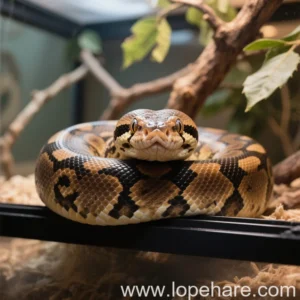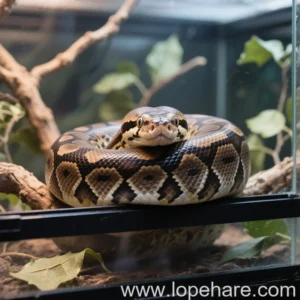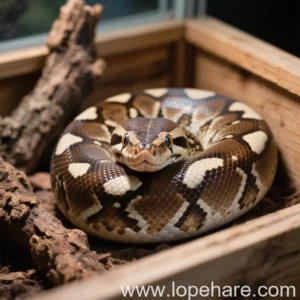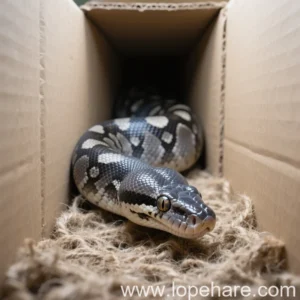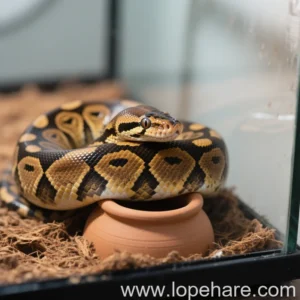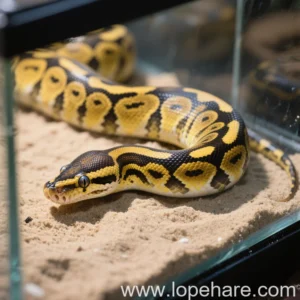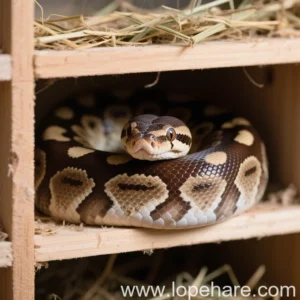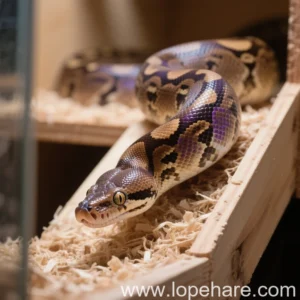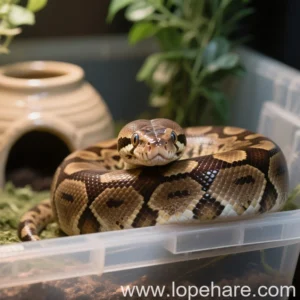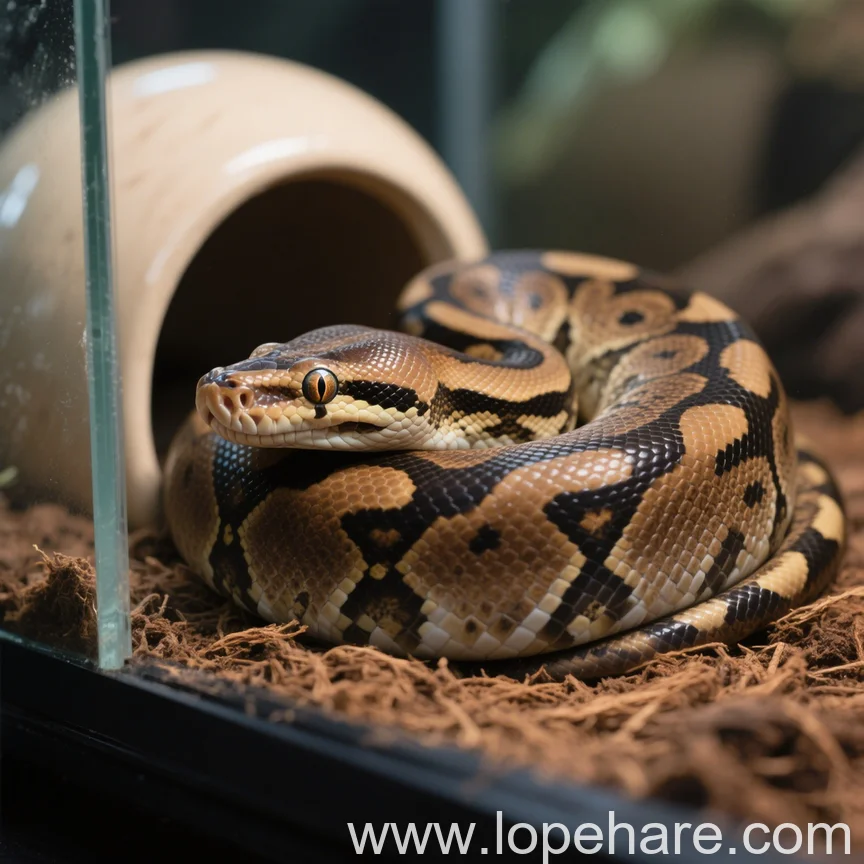
Reptile Husbandry
Ball Python Enrichment Ideas: Creating a Stimulating Habitat for Your Snake
Ball pythons (Python regius) are among the most popular pet snakes, known for their docile nature and manageable size. However, providing adequate care goes far beyond just meeting their basic needs for heat, humidity, and food. Just like any animal, ball pythons benefit greatly from environmental enrichment. As passionate exotic pet enthusiasts here at lopehare.com, we understand the importance of going the extra mile to ensure our scaly companions not only survive but thrive. Providing environmental enrichment for ball pythons is crucial for their physical and psychological well-being.
Why Enrichment Matters for Ball Pythons
In the wild, ball pythons are crepuscular (most active at dawn and dusk) and spend their time hunting, exploring, hiding, and navigating a complex environment of burrows, logs, and vegetation. In captivity, a sterile enclosure, while clean, can lead to boredom, stress, and potentially negative behaviors such as lethargy, lack of appetite, or repetitive movements. Enrichment helps replicate natural behaviors and stimulates their senses, leading to a healthier, more engaged snake.
What is Environmental Enrichment?
Environmental enrichment for captive animals is the process of modifying their environment to increase physical activity, reduce inactive states, increase the diversity of daily activities, and buffer against stress [1]. For a ball python, this means offering opportunities to climb, explore, hide, forage, and interact with different textures and scents within their enclosure.
Types of Ball Python Enrichment
Enrichment can be categorized into several types:
Environmental/Structural Enrichment
This involves adding items to the enclosure to increase complexity and encourage natural behaviors like climbing, burrowing, and hiding.
- Multiple Hides: Provide at least two hides – one on the warm side and one on the cool side. These should be snug and dark, allowing the snake to feel secure. Different types (caves, logs, cork bark) offer variety.
- Climbing Opportunities: While not primarily arboreal, ball pythons do climb. Sturdy branches, cork bark tubes, or textured rocks allow them to explore vertical space and exercise different muscles.
 Substrate Variation: Offer areas with different substrates. One end could have cypress mulch or coconut fiber for burrowing, while another might have smooth rocks or slate tiles for basking and shedding aid.
Substrate Variation: Offer areas with different substrates. One end could have cypress mulch or coconut fiber for burrowing, while another might have smooth rocks or slate tiles for basking and shedding aid.- Leaf Litter & Botanicals: Adding dried leaves (like oak or magnolia, ensured pesticide-free) or reptile-safe botanicals provides cover, helps maintain humidity, and offers new textures and scents to explore.
- Rearranging the Decor: Periodically changing the layout of hides, branches, and other furnishings provides novelty and encourages exploration. This is one of the simplest DIY ball python enrichment ideas.
Sensory Enrichment
This stimulates the snake’s senses, primarily smell and touch.
- New Scents: Introducing non-toxic scents, like a shed skin from another healthy snake (ensure no mites or diseases), a natural log from a safe outdoor area (inspect thoroughly first), or rubbing an herb like basil or mint on a surface (ensure it’s safe and temporary).
- Different Textures: Incorporating materials with varying textures like smooth rocks, rough bark, soft moss, or crunchy leaves.
Feeding Enrichment
Making mealtime more challenging or interesting, mimicking natural hunting.
- Slightly Hiding Prey: Instead of just dropping the prey in front of the snake, hide it slightly under leaf litter or near a hide to encourage seeking behavior.
- Puzzle Feeders: For some individuals, a simple “puzzle” like placing the prey item in a container with a small opening they need to navigate might be appropriate, but always monitor closely to ensure the snake isn’t stressed and can access the meal safely.
Caution with Feeding Enrichment: Ensure any feeding enrichment method doesn’t cause the snake undue stress or risk injury. Some ball pythons are very sensitive feeders.
Cognitive Enrichment
This involves introducing novelty or problem-solving opportunities.
- Novel Objects: Temporarily introduce safe, clean objects like a cardboard tube, a small clean box, or a new piece of cork bark. Observe how the snake interacts with it.
- Supervised Out-of-Enclosure Time: Allowing supervised exploration in a safe, enclosed space outside the main enclosure can provide significant mental stimulation. Ensure the area is warm, secure, and free from hazards, other pets, or drafts.
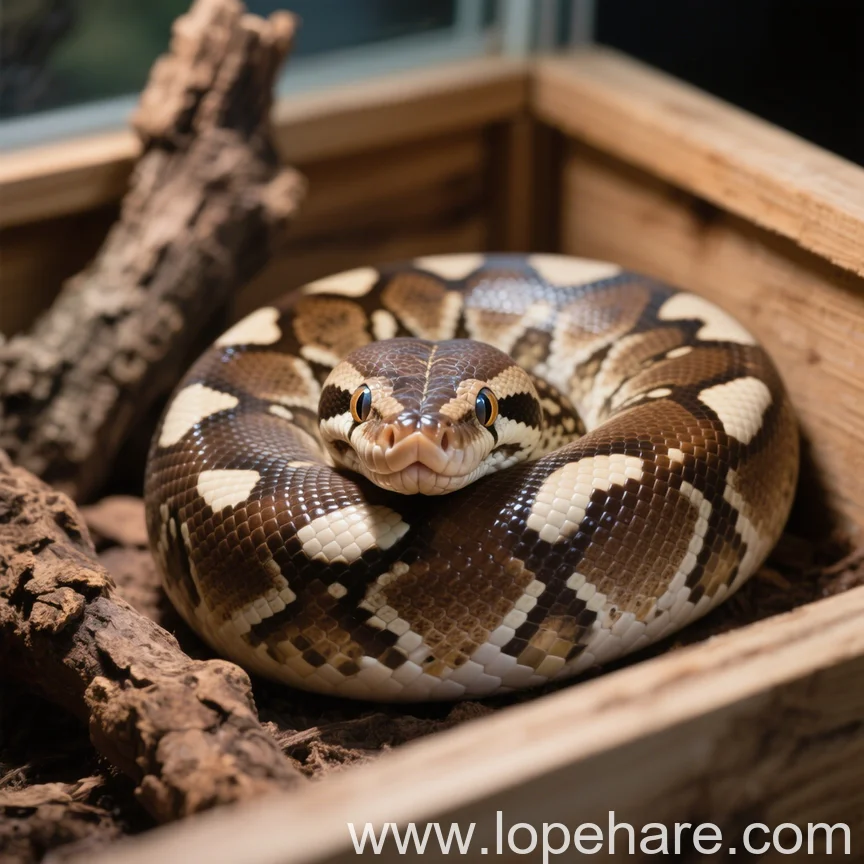
Implementing Enrichment Safely
Safety is paramount when adding anything to your ball python’s enclosure or routine:
- Research: Ensure any materials added are non-toxic and safe for reptiles. Avoid pine or cedar substrates, which contain harmful phenols.
- Cleanliness: Thoroughly clean and sanitize any natural items gathered from outside (baking or freezing can kill parasites). New store-bought items should also be cleaned.
- Security: Ensure items are stable and cannot fall on or trap the snake. Branches should be securely anchored.
- Observe: Introduce new items gradually and observe your snake’s reaction. Some snakes may be initially wary. Remove anything that seems to cause stress or injury.
- Humidity & Temperature: Ensure enrichment items don’t interfere with maintaining the required temperature and humidity gradients.
Start Small: Don’t overcrowd the enclosure. A few well-chosen items are better than a cluttered, stressful environment. The snake still needs room to move freely.
Conclusion: A Stimulating Life
Providing environmental enrichment is a critical, yet often overlooked, aspect of excellent ball python husbandry. It moves beyond simply keeping your snake alive and aims to give them a fulfilling and stimulating life in captivity. By incorporating varied structures, textures, scents, and occasional novelties, you encourage natural behaviors, reduce stress, and contribute significantly to your ball python’s long-term health and happiness.
At lopehare.com, we believe in empowering pet owners with the knowledge to provide the best care for their unique companions. Implementing enrichment ideas for your ball python is one of the most rewarding ways to enhance their captive environment.
References
[1] Modified from definitions of environmental enrichment in captive animal welfare literature (e.g., Sheperdson, D. (1998). Environmental enrichment: An ecological approach. In D. Fraser (Ed.), Environmental enrichment for captive animals (pp. 1-14). Universities Federation for Animal Welfare).
